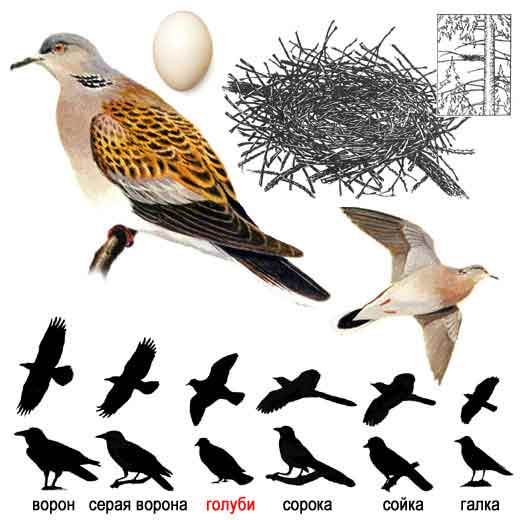
Turteldue,
Turtle dove
http://commons.wikimedia.org/
The Turtle Dove is a migratory
species with a western Palearctic range, including Turkey and north
Africa, though it is rare in northern
Scandinavia and Russia; it winters in southern Africa.
In the British Isles, France, and elsewhere
in northwestern Europe it is in severe population decline. This
is partly because changed
farming practices mean that the weed seeds and shoots on which it
feeds, especially Fumitory, are scarcer, and partly due to shooting
of birds during migration
in Mediterranean countries.
Smaller and slighter in build than other
doves, the Turtle Dove may be recognised by its browner colour,
and the black and white striped
patch on the side of its neck, but it is its tail that catches the
eye when it flies from the observer:
it is wedge shaped, with a dark centre and white borders and tips.
When viewed from below this pattern, owing to the white under tail
coverts obscuring the dark bases, is a blackish chevron on a white
ground.
This is noticeable when the bird stoops to drink, raising its spread
tail.

Turteldue,
Turtle dove
http://commons.wikimedia.org/
The Turtle Dove, one of the latest migrants,
rarely appears in Northern Europe before the end of April, returning
south again in September.
It is a bird of open rather than dense
woodlands, and frequently feeds on the ground.
It will occasionally nest in large gardens, but is usually extremely
timid, probably due to the heavy hunting pressure it faces on migration.
The flight is often described as arrowy,
but is not remarkably swift.
The nuptial flight, high and circling, is
rather like that of the Wood Pigeon, but the undulations are less
decided; it is accompanied by the
whipcrack of the downward flicked wings.
The arrival in spring is heralded by its purring song, a rather
deep, vibrating “turrr, turrr”, from which the bird's
name is derived.
The nest is even more flimsy looking than
that of the Wood Pigeon, being built of more slender twigs, usually
at no great height,
in a tree or old untrimmed hedge. The two white eggs are laid late
in May or in June, often with a second clutch in July or August.
http://en.wikipedia.org

European
Turtle-dove photographed at Ghadira Nature Reserve in Mellieha,
Malta. The reserve is managed by BirdLife Malta.
http://www.birdlife.org










